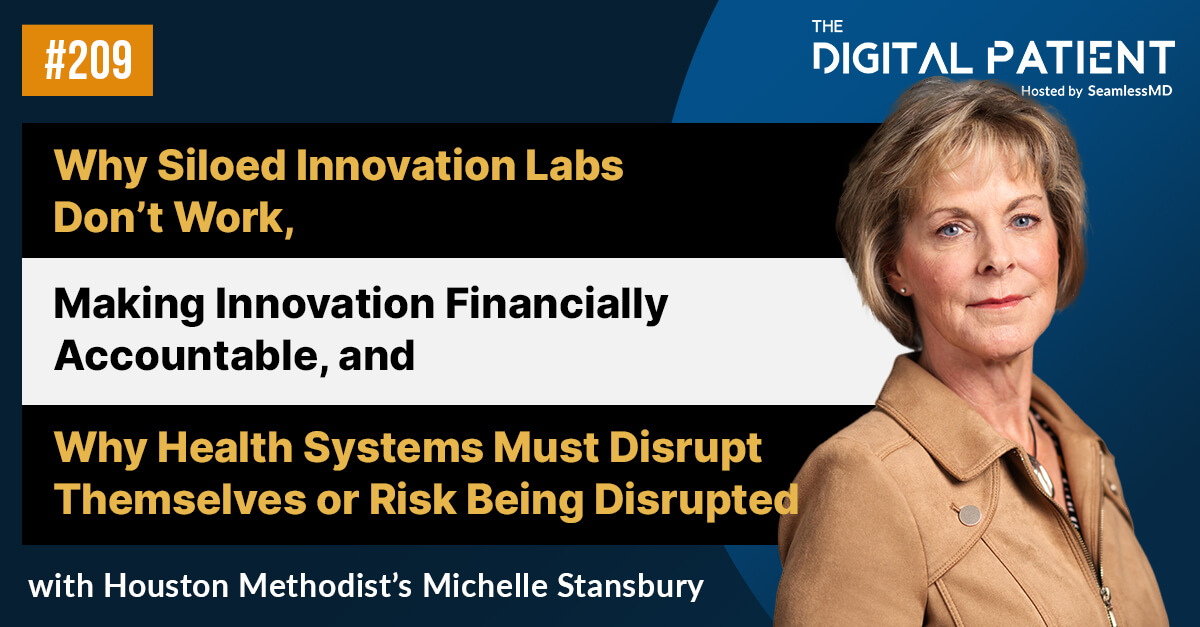Subscribe on: RSS | SPOTIFY | APPLE PODCAST | GOOGLE | BREAKER | ANCHOR
Audio:
Video:
In this episode of the SeamlessMD Podcast, Dr. Joshua Liu, Co-founder & CEO at SeamlessMD, and marketing colleague, Alan Sardana, chat with Dr. Jeffrey Blatnik, Assistant Professor of Surgery and Director of the Hernia Center at Washington University at St. Louis, about "Digital Patient Engagement to Improve Hernia Surgical Quality, Patient Experience & Patient-Reported Outcomes". See the full show notes below for details.
Guest(s):
Dr. Jeffrey Blatnik (@jeffblatnik), Assistant Professor of Surgery and Director of the Hernia Center at Washington University at St. Louis (WUSTL)
Dr. Joshua Liu (@joshuapliu), Co-founder & CEO at SeamlessMD
Episode 53 – Show notes:
[0:20] Introducing Dr. Jeffrey Blatnik, Assistant Professor of Surgery at Washington University at St. Louis (WUSTL) & Director of the Hernia Center at Washington University;
[3:00] Why Dr. Blatnik focuses on patient safety & quality as he believes Hernia surgery success should be measured outside the 30-day post-op window since hernia patients often present lifelong challenges;
[4:20] How Dr. Blatnik became interested in Hernia repair initially by learning from thought leaders like Michael Rosen, Yuri W. Novitsky & Ajita Prabhu and how they taught a holistic approach to providing excellent patient care as opposed to just “patching holes”;
[5:30] Why Dr. Blatnik and his team initially looked to digital patient engagement (back in 2019) for its ability to fill the gap in patient education – realizing that patients are often overwhelmed with information and needed a better way to get the right care when they need it most;
[7:50] Why Dr. Blatnik views SeamlessMD as a way for his patients to engage in their own care – getting answers to their questions along their journey such as “is a cough normal?” or wound issues – while staying connected to their care team should a problem arise;
[9:50] Why Dr. Blatnik and his team at WUSTL have used the digital platform more during COVID not only for improved patient safety but also because patients have come to expect the digital experience;
[10:58] Why Dr. Blatnik believes consumers are more independently-driven to find the best care, which has led to a democratization of access and patients driving 2-4+ hours to get better care at WUSTL and how Digital Patient Engagement platforms help with remote care by providing patients education at home and by monitoring symptoms remotely to avoid unnecessary follow-up visits;
[12:15] Why Dr. Blatnik views Patient-Reported Outcomes (PROs) as part of the whole care spectrum, understanding that how the patient perceives their recovery is just as important as how their wound heals, and how leveraging tools like SeamlessMD has helped his team collect PROs as it also provides vital information for patients;
[14:27] Why WUSTL Hernia group relies on SeamlessMD’s Remote Patient Monitoring capabilities to catch issues during the early post-op period including wound images and patient-reported symptoms (pain, nausea, mood, etc.);
[15:55] How Dr. Blatnik corralled his team to adopt Digital Patient Engagement by involving them in the development process (content, protocols, alerts & notifications etc.) and why getting this input from various stakeholders was important to understand the full picture of patient care (for e.g. Dr. Blatnik’s office staff often dealt with patient concerns related to their staples whereas he never had to deal with those questions);
[18:27] Why Dr. Blatnik believes mentorship is important for growth, learning and guidance, and how being a mentor provides emotional satisfaction and pushes you to be more open to new ideas;
[20:00] Why Dr. Blatnik believes virtual technology has not/will not replace the relationship-building aspects of healthcare, but understands that patients as consumers rely on technology to get information and answers faster and how physicians will have to accommodate accordingly;
[21:57] Why Dr. Blatnik believes virtual technology is “good” for healthcare conferences and networking but not “great” and how there are aspects of virtual technology that are important for academics, but again, will not replace in-person communication;
[24:35] Why Dr. Blatnik believes a major hindrance to wide adoption of virtual care is regulation such as physician state licenses, but how over the next 3-5 years these challenges will subside as patients expect and request virtual care more;
[26:00] Fast 5 / Lightning Round:
Q1: What is your favorite book or book you’ve gifted the most?
“Depends on my mood. Most recently, I loved a book about the recent Thailand cave rescue.”
Q2: What is your favorite scuba-diving destination?
There’s two:
- Costa Rica (pacific coast) – much more rocky, huge amounts of wildlife like eels, sharks, octopus
- Grand Cayman or Turks and Caicos – bright blue, bright fishes
Q3: What is something in healthcare you believe that others might find insane?
“The amount of paperwork we have to do. For example, we have to do paperwork to track that we’ve done the computer admin work.”
Q4: Would you rather have Super strength, super speed, or the ability to read people’s minds?
“Probably super speed to give myself more time in the day to spend with my wife and kids.”
Q5: COVID-19 lockdown related – what is 1 hobby or activity you’ve gotten into since the pandemic?
“I’ve amassed a pretty great bourbon collection… We’ve also started a family movie night.”
.svg)










.png)
